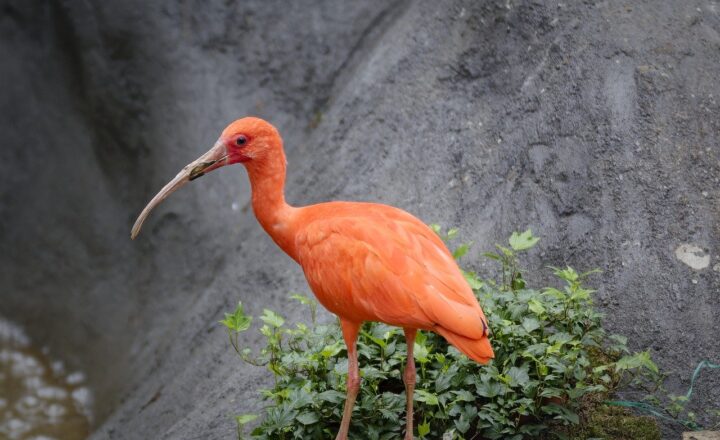How Evolution Explains the Variety of Life Forms on Earth and Their Unique Adaptations
November 12, 2024

The diverse tapestry of life on Earth has fascinated scientists and naturalists alike for centuries. From the depths of the ocean to the heights of mountains, life has adapted in countless ways to suit different environments. Evolution, a fundamental biological process, is the key to understanding this remarkable diversity. In this article, we delve into the mechanisms of evolution, the evidence that supports it, and the fascinating adaptations of various species that illustrate the power and intricacy of this process.
1. Understanding the Basics of Evolution
To comprehend the variety of life forms on Earth, we must first understand what evolution is. At its core, evolution is the change in the genetic makeup of populations over generations. It is driven by several mechanisms, including natural selection, mutation, gene flow, and genetic drift. These processes contribute to the adaptation of organisms to their environment, resulting in the vast array of species we see today.
Natural Selection: Often referred to as the “survival of the fittest,” natural selection is the process by which individuals with advantageous traits are more likely to survive and reproduce. Over time, these traits become more common in the population.
Mutation: Mutations are random changes in the DNA sequence that can introduce new traits into a population. While many mutations are neutral or harmful, some can confer advantages that allow for better adaptation to changing environments.
Gene Flow: This occurs when individuals from different populations interbreed, exchanging genetic material. Gene flow can introduce new variations into a population, enhancing its adaptability.
Genetic Drift: In small populations, random events can significantly impact which individuals survive and reproduce, affecting the gene pool. This randomness can lead to drastic changes in the population’s genetic makeup over time.
All these mechanisms work together to shape the genetic diversity of life on our planet.
2. Evidence of Evolution: Fossils and Genetics
The evidence supporting evolution comes from various scientific fields. One of the most compelling sources of evidence is the fossil record. Fossils are the preserved remains of organisms from the past, providing a chronological account of life’s changes over millions of years.
Transitional Fossils: These fossils showcase intermediate forms between ancient and modern species, demonstrating how evolutionary changes occur. For example, the fossilized remains of Tiktaalik, a fish with both gills and lungs, illustrate the transition from aquatic to terrestrial life.
Genetic Evidence: Advances in molecular biology have allowed scientists to compare DNA sequences across different species. The more closely related two species are, the more similar their DNA is. This genetic homology provides further support for common ancestry.
Biogeography: The geographical distribution of species also provides insight into evolution. For instance, unique species found on islands often resemble species from nearby mainland regions, suggesting that they share a common ancestor and adapted to their specific environments.
Each of these elements contributes to a robust understanding of how life has evolved on Earth over time.
3. Unique Adaptations: Examples from the Animal Kingdom
Adaptations are traits that enhance an organism’s ability to survive and reproduce in its environment. Here are a few remarkable examples of adaptations that highlight the ingenuity of evolutionary processes:
The Arctic Fox: Adapted to survive in extremely cold environments, the Arctic fox has a thick coat of fur that changes color with the seasons. Its white fur in winter provides camouflage against the snow, while its brown summer coat helps it blend in with the tundra.
The Giraffe: Giraffes have long necks that allow them to reach high branches and access food other animals cannot reach. This adaptation has given them a competitive advantage in their habitat. Interestingly, the giraffe’s long neck is also the result of sexual selection, as males often compete for mates by fighting with their necks.
The Cuttlefish: These cephalopods can change their skin color and texture almost instantaneously, allowing them to communicate with each other and evade predators. This remarkable ability to blend into their surroundings is a classic example of evolutionary adaptation driven by both predation and communication needs.
Darwin’s Finches: The different beak shapes of Darwin’s finches are adaptations to their specific feeding environments in the Galápagos Islands. The variations in beak size and shape among the finches reflect their dietary needs, showcasing how natural selection can lead to diverse adaptations within a relatively short time frame.
These examples illustrate the creative forces of evolution and how species adapt in unique ways to thrive in their respective environments.
4. The Role of Extinction in Evolution
While evolution fosters diversity, it is also essential to understand the role of extinction in shaping life. Extinction events, such as the mass extinction at the end of the Cretaceous period, have dramatically altered ecosystems and opened opportunities for new species to evolve.
During these events, species that failed to adapt or compete effectively with others disappeared, clearing the way for a proliferation of new organisms. For instance, after the dinosaurs went extinct, mammals diversified and filled the ecological niches left behind, leading to the vast biodiversity we see today.
Adaptive Radiation: This is the process by which organisms rapidly diversify into a variety of forms to adapt to different environments. A prime example is seen in mammals after the extinction of the dinosaurs, leading to the rise of varied species, from whales to elephants, each uniquely suited to their habitats.
Understanding extinction provides critical insights into how life is interconnected and the delicate balance that sustains it.
5. Human Evolution: A Case Study in Change
Human evolution provides an intriguing perspective on how evolution operates. Our species, Homo sapiens, shares a common ancestor with other primates, illustrating evolutionary connections across species. The changes in our physical and cognitive traits are the result of millions of years of evolution shaped by environmental demands and social interactions.
Bipedalism: One of the defining traits of humans is bipedalism, or walking on two legs. This adaptation allowed early humans to travel greater distances, freeing their hands for tool use and interactions.
Larger Brains: Over time, human brains have become larger relative to body size, facilitating advanced problem-solving, communication, and social interaction. This adaptation has allowed humans to manipulate and adapt to their environment in unique ways compared to other species.
Through studying human evolution, we gain valuable insights into the adaptive significance of our traits and how interconnected we are with the rest of life on Earth.
Conclusion: Embracing the Complexity of Life
In conclusion, the variety of life forms on Earth, driven by the processes of evolution, is a testament to the complexity and resilience of biological systems. From the intricate relationships between species to the unique adaptations that allow them to survive in diverse environments, evolution continues to shape life in astonishing ways. By embracing this understanding, we not only appreciate the marvels of the natural world but also recognize our responsibility to protect it, ensuring that the rich tapestry of life continues for future generations.







